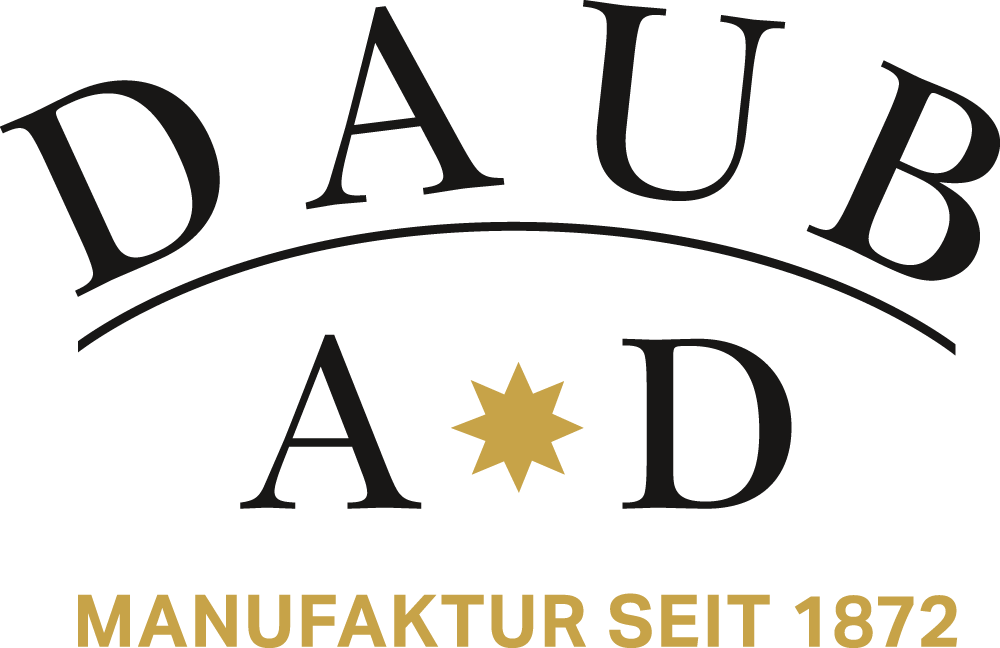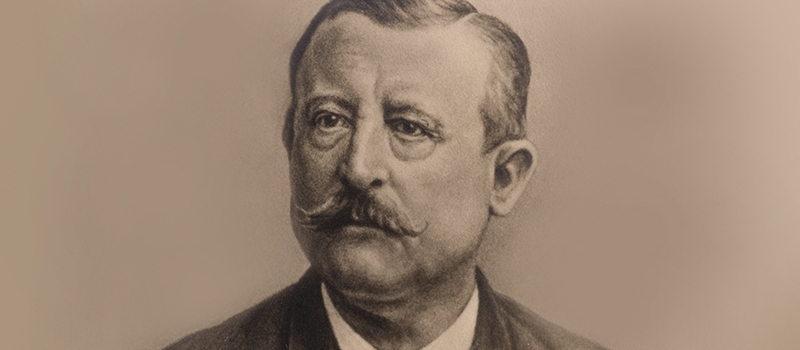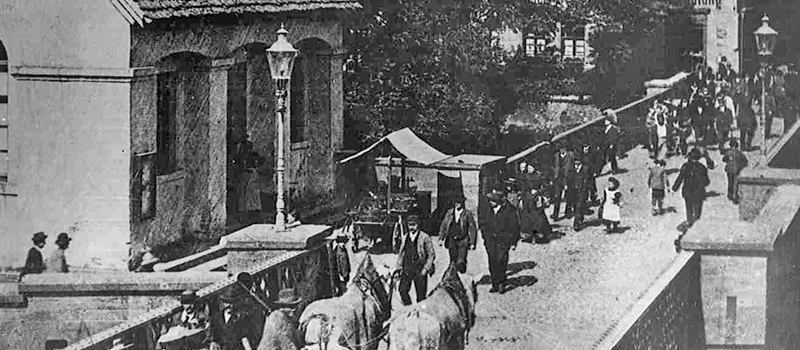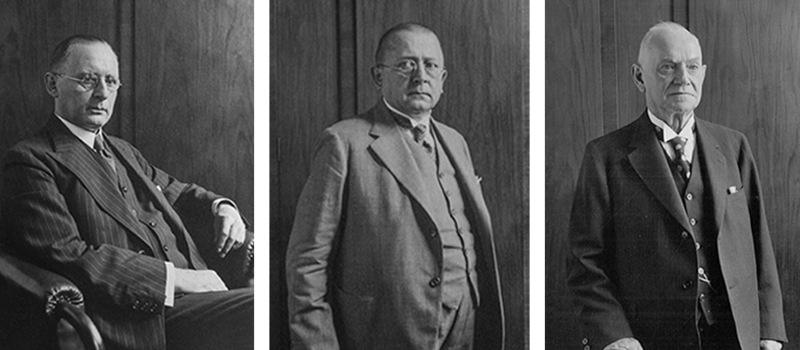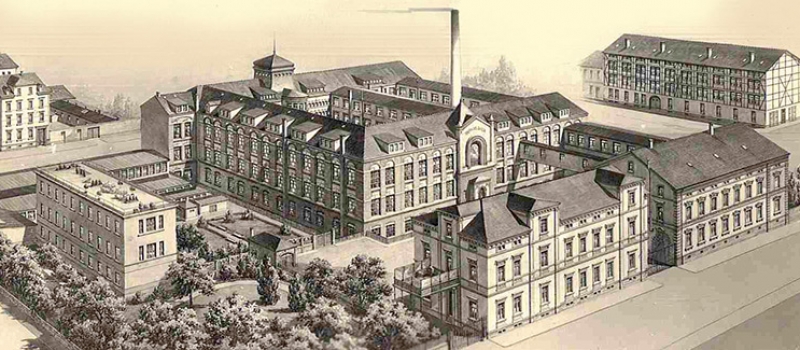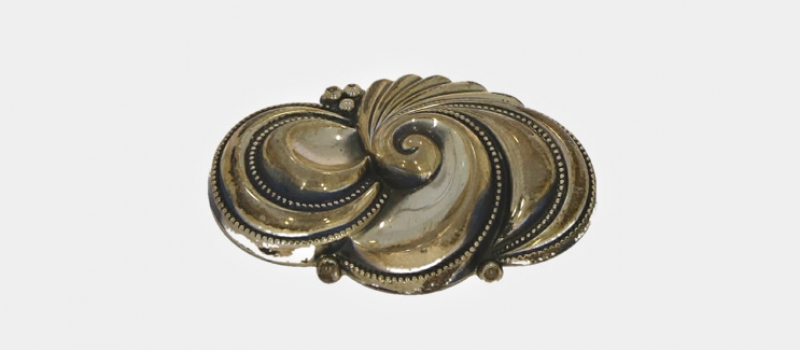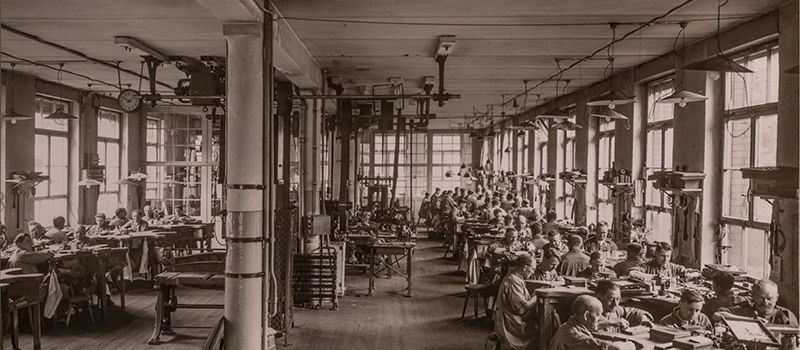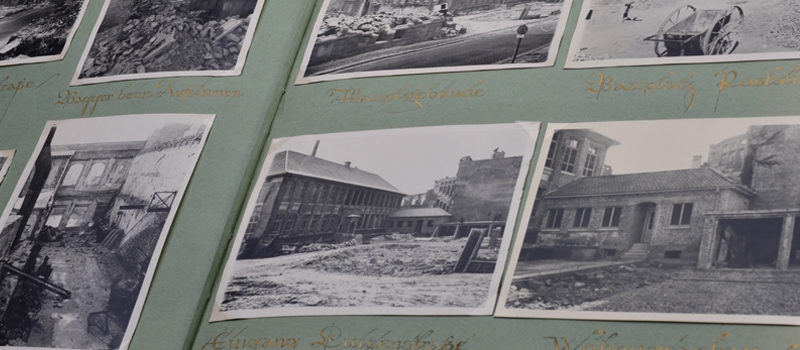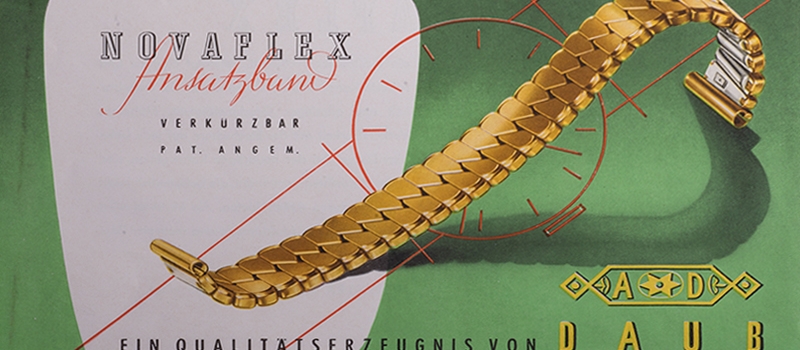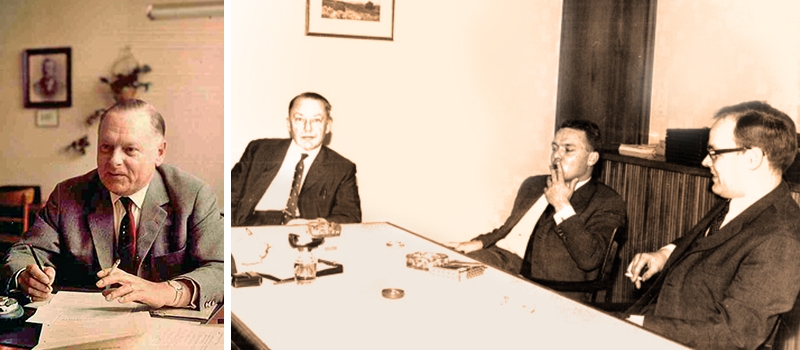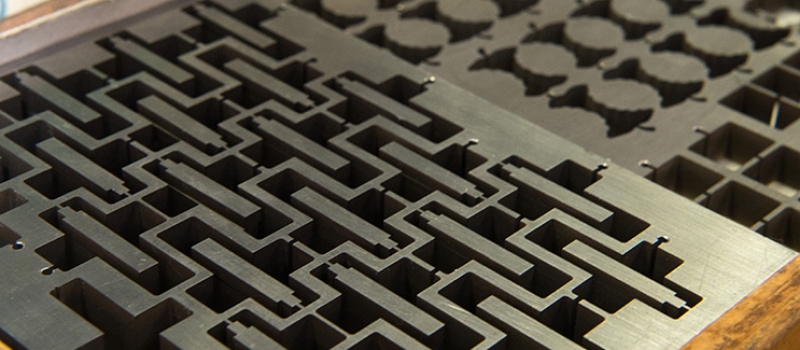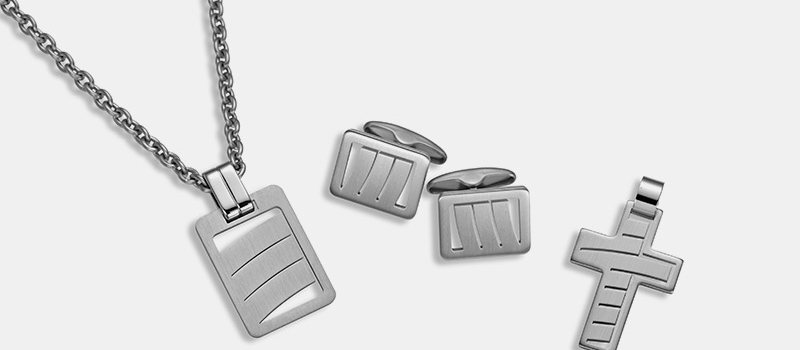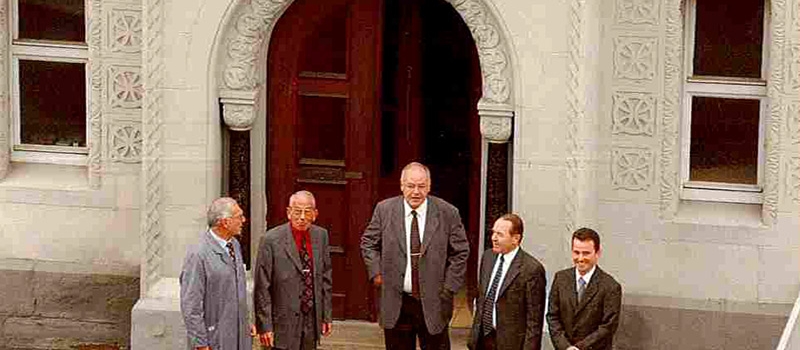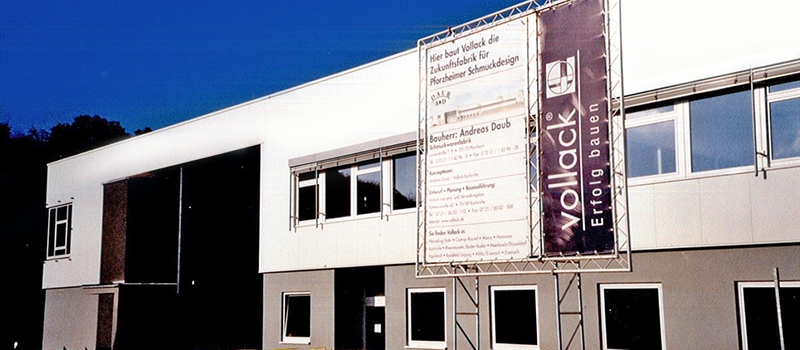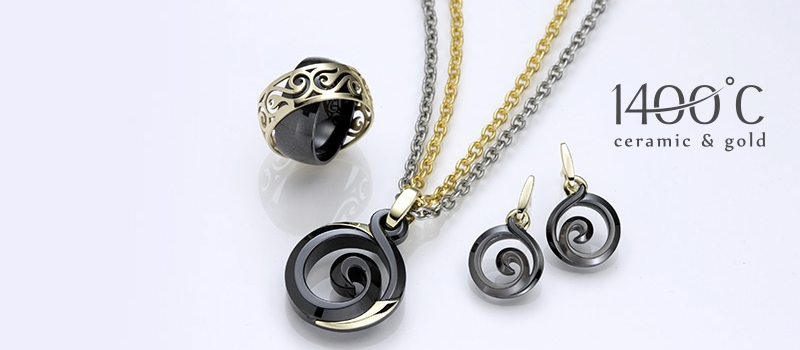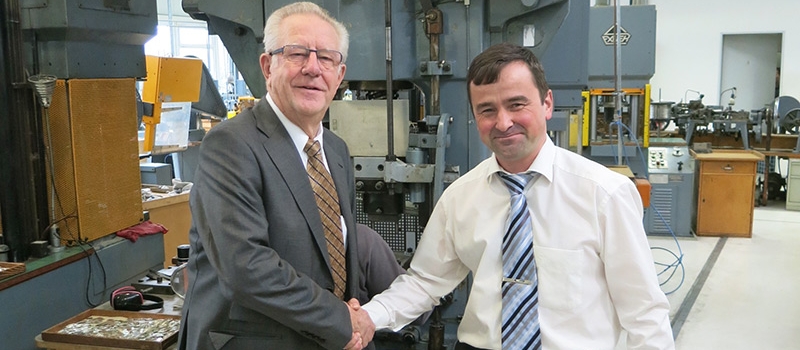


Andreas Daub Pforzheim – Jewellery since 1872
Over 150 years ago, in 1872, company founder Andreas Daub laid the foundations for one of the most important companies in the jewellery industry. As a young goldsmith, he quickly recognised the opportunities that the traditional location of Pforzheim offered for industrial jewellery production with an international focus. By 1900, Andreas Daub was already one of the leading jewellery companies in Europe. To this day, the Andreas Daub company has continued to develop and now supplies customers worldwide.
In this year, the first mention of Andreas Daub “Bijoutier, Metzgerstraße 62” can be found in the address book of the time.
The company presents itself in the address book of this year as “Andreas Daub, Deimlingstr. 26, Medaillonfabrik, Broshes und goldene Shawinadeln”.
Son-in-law Ludwig Stark and sons Ludwig and Adolf Daub are now working in the company. The workforce has now grown to 90 employees.
During these years, a new building for the factory was constructed on Luisenstraße. This was to remain the company’s headquarters until 2001.
The economic crisis of 1929 causes only a brief slump in demand for jewellery from Andreas Daub.
During the air raid on the city on 23 February 1945, Andreas Daub’s production facility is destroyed. In the months that followed, the company initially manufactured in the Gasthaus Engel in Göbrichen, and later in Habermehlstraße in Pforzheim. In 1948, the company moved into the rebuilt factory in Luisenstraße.
Thanks to the patents for Novaflex and Mylord and Mylady, the share of sales accounted for by watch straps increases and overtakes jewellery.
The fourth generation with Ludwig Stark jun., Kurt Daub, Helmut Daub and Fritz Daub is followed by the fourth generation represented by Karl Adolf Daub, Heinz Daub and Hermann Daub.
Andreas Daub is one of the first factories in Pforzheim to invest in a wire-cutting machine for the production of punching tools.
The first men’s jewellery collection made of stainless steel is presented at the Basel trade fair. This later develops into the ADAMO collection.
The company is now under the joint management of the fourth and fifth generations.
With the new production facility on the Wilferdinger Höhe in Pforzheim, the Andreas Daub company is moving into its “factory of the future”.
The 1400°C zirconium oxide collection, produced entirely in-house, is launched on the market.
In this year, the first mention of Andreas Daub “Bijoutier, Metzgerstraße 62” can be found in the address book of the time.
The company presents itself in the address book of this year as “Andreas Daub, Deimlingstr. 26, Medaillonfabrik, Broshes und goldene Shawinadeln”.
Son-in-law Ludwig Stark and sons Ludwig and Adolf Daub are now working in the company. The workforce has now grown to 90 employees.
During these years, a new building for the factory was constructed on Luisenstraße. This was to remain the company’s headquarters until 2001.
The economic crisis of 1929 causes only a brief slump in demand for jewellery from Andreas Daub.
During the air raid on the city on 23 February 1945, Andreas Daub’s production facility is destroyed. In the months that followed, the company initially manufactured in the Gasthaus Engel in Göbrichen, and later in Habermehlstraße in Pforzheim. In 1948, the company moved into the rebuilt factory in Luisenstraße.
Thanks to the patents for Novaflex and Mylord and Mylady, the share of sales accounted for by watch straps increases and overtakes jewellery.
The fourth generation with Ludwig Stark jun., Kurt Daub, Helmut Daub and Fritz Daub is followed by the fourth generation represented by Karl Adolf Daub, Heinz Daub and Hermann Daub
Andreas Daub is one of the first factories in Pforzheim to invest in a wire-cutting machine for the production of punching tools.
The first men’s jewellery collection made of stainless steel is presented at the Basel trade fair. This later develops into the ADAMO collection.
The company is now under the joint management of the fourth and fifth generations.
With the new production facility on the Wilferdinger Höhe in Pforzheim, the Andreas Daub company is moving into its “factory of the future”.
The 1400°C zirconium oxide collection, produced entirely in-house, is launched on the market.
h
